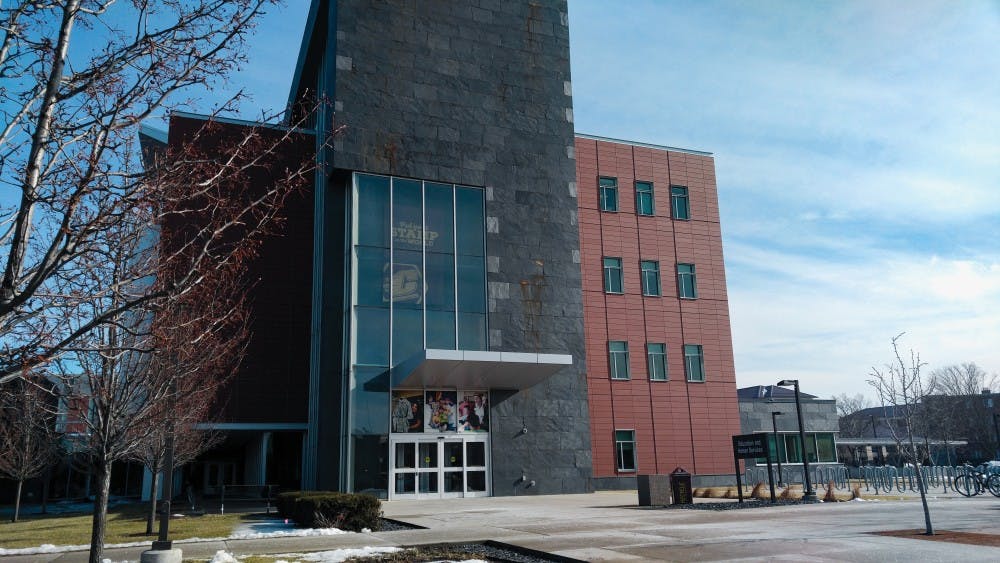College of Education persists against declining national teacher enrollment
Like many universities in the United States, Central Michigan University is seeing a decline in the number of students pursuing degrees in education.
Statistics show that the number of students who are majoring in education have decreased over the years. A 2016 study from the Learning Policy Institute found there was a 35 percent reduction of enrollment in undergraduate teacher preparation since 2009.
CMU's College of Education and Human Services is working hard to combat the trend and prepare the country's future teachers.
Between 2012 and 2016, overall undergraduate student enrollment in EHS has fallen from 1,692 to 1,530. Graduate enrollment has seen a similar decline, falling from 273 in 2012 to 173 in 2016.
EHS is not focusing on the numbers, but rather focusing on producing the best educators they can, said Katherine Dirkin, chair of the Teacher Education program.
“We’re looking at it in terms of the state needs, what our students need,” Dirkin said. “It’s about what’s the best thing we can do to prepare exceptional teacher educators. We could fill seats, but that’s not always producing the best teacher educators, and that’s our focus.”
Dirkin said she is optimistic about the college’s direction and the changes that have been implemented in its innovative programs.
Dale Elizabeth-Pehrsson, dean of the EHS, is also optimistic about the future. She said the EHS was one of the first colleges to hire its own recruiter for teacher education and for the other services in the college.
She believes in the direction of the college and that teaching is the “essential profession.”
“Teachers have to know psychology, physical development, family dynamics, pedagogy, and be experts in content overall,” she said. “How many professions do you know that have to know all that?”
Teachers are not only important, but absolutely necessary, Pehrsson said.
Total student enrollment in elementary and secondary schools is expected to increase by 2 percent-- to 56.5 million-- between 2013 and 2025, according to projections by the National Center for Education Statistics. In 21 states, enrollment is projected to increase by 5 percent or more.
But where there is an increase of incoming students, there is a lack of incoming teachers.
Nationally, the 2016 median annual wages for high school teachers was $58,030, according to the Bureau of Labor Statistics. In addition to working regular school hours, teachers put in extra time grading homework, planning curriculum, meeting with parents and engaging with extracurricular activities.
Owosso sophomore Kyle Wendling, a music education major, recalled how money can be a difficult part of deciding to pursue education.
“It’s difficult to get through college as a music education major. The payoff sometimes isn’t what people need considering the amount of work we put in," Wendling said. "As music majors, we have to buy our own instruments and stuff, and that’s a lot of money on top of tuition and everything. The eventual salary just isn’t enough for some people.”
For students like Union City junior April Inman, even disincentives salaries aren't enough to stifle her passion for education. Inman cites her fourth grade teacher Marcie Mead as her inspiration to pursue an elementary education major.
"(Mrs. Mead) helped me to discover I had a learning disability that know one else knew about, and she got me help with that so I was able to overcome it," Inman said. "I want there to be more teachers who are attentive of kids who aren’t doing as well as everybody else.”
Along with salary, there are other factors that have hindered education majors.
In 2013, many students were discouraged from beginning a pathway to teaching when the Professional Readiness Exam was implemented as the basic certification test for aspiring teachers. This test, which was considered much more difficult than the previous Basic Skills test, had only a 20 percent pass rate for those who took it. The pass-rate under the Basic Skills test was 82 percent.
The 26 colleges involved with the PRE argued the difficulty might deter students from pursuing education degrees. The colleges submitted a study to the Michigan Department of Education, in which they outlined the results they saw and why they thought the PRE prevented students from becoming teachers.
In February 2017, the MDE ruled to phase out the PRE.
As of Oct. 1, the PRE was no longer available as an option for fulfilling the basic skills examination for student teaching in Michigan. Students in Michigan may now use SAT scores as their teaching certification.




